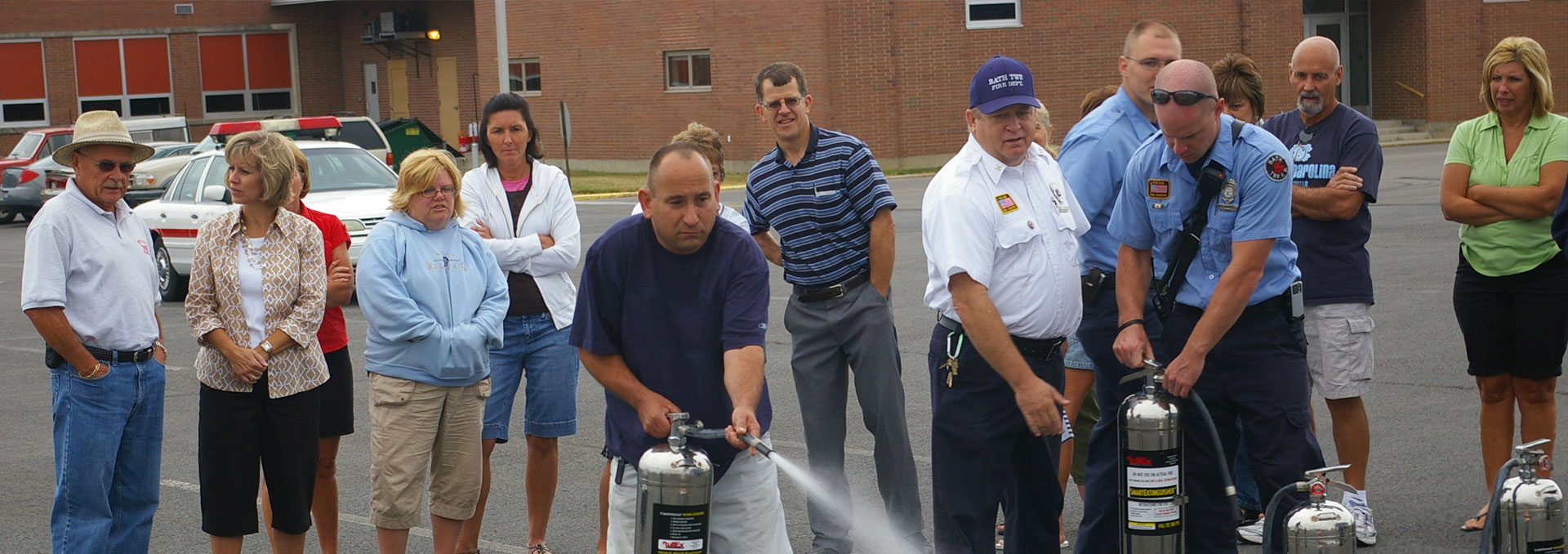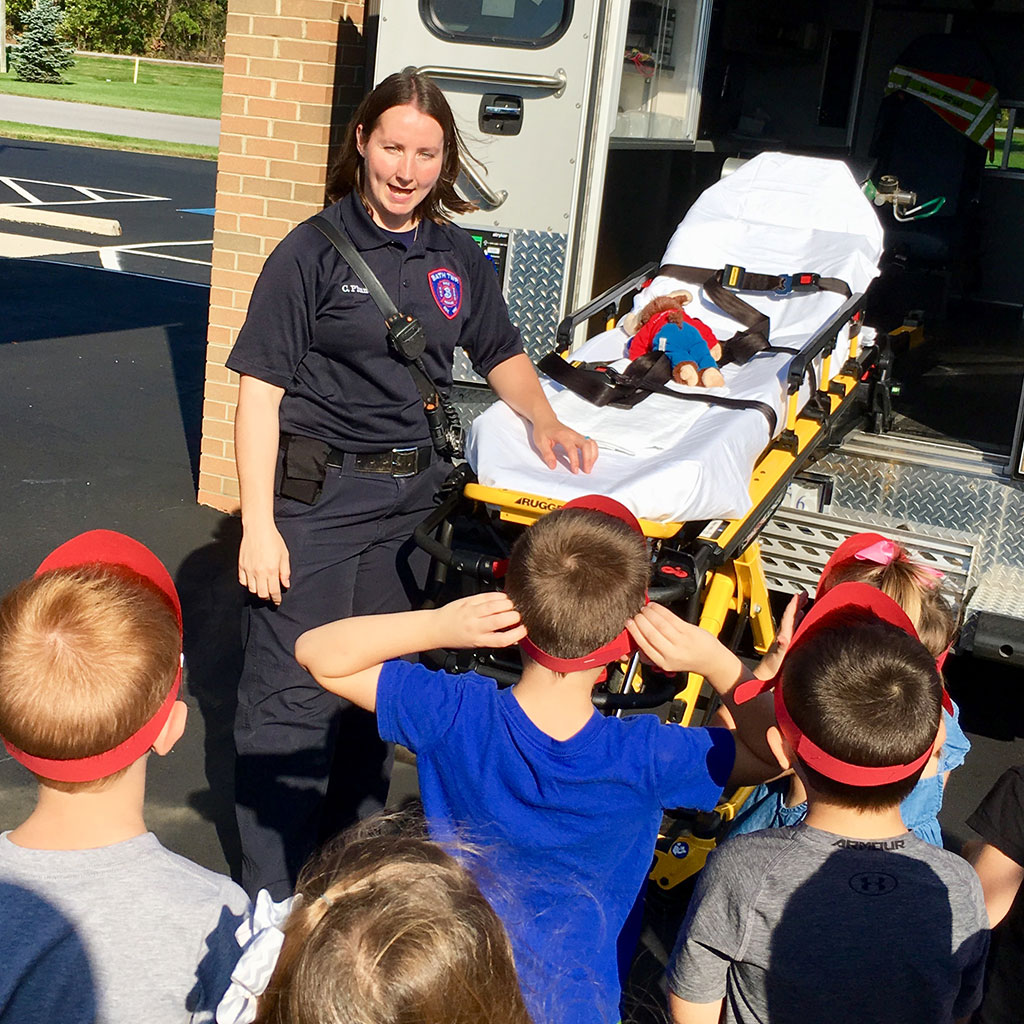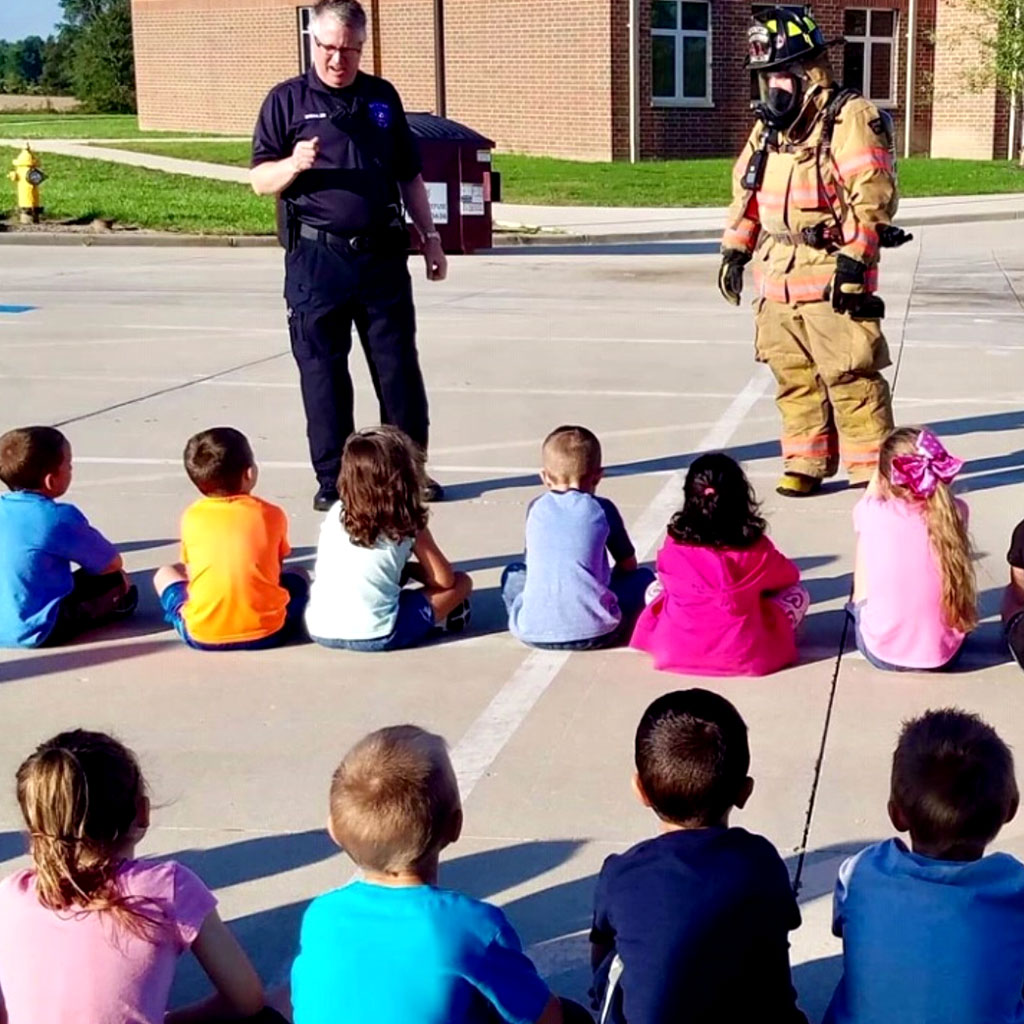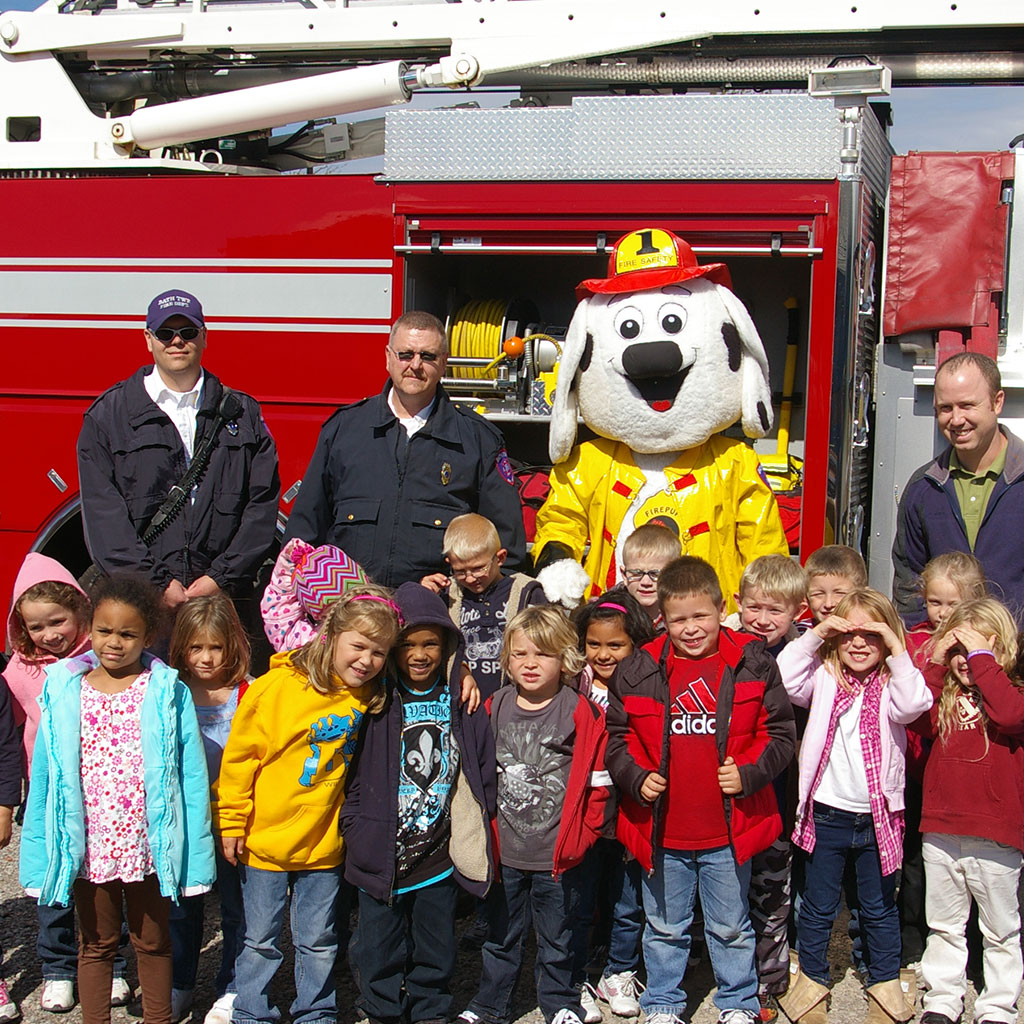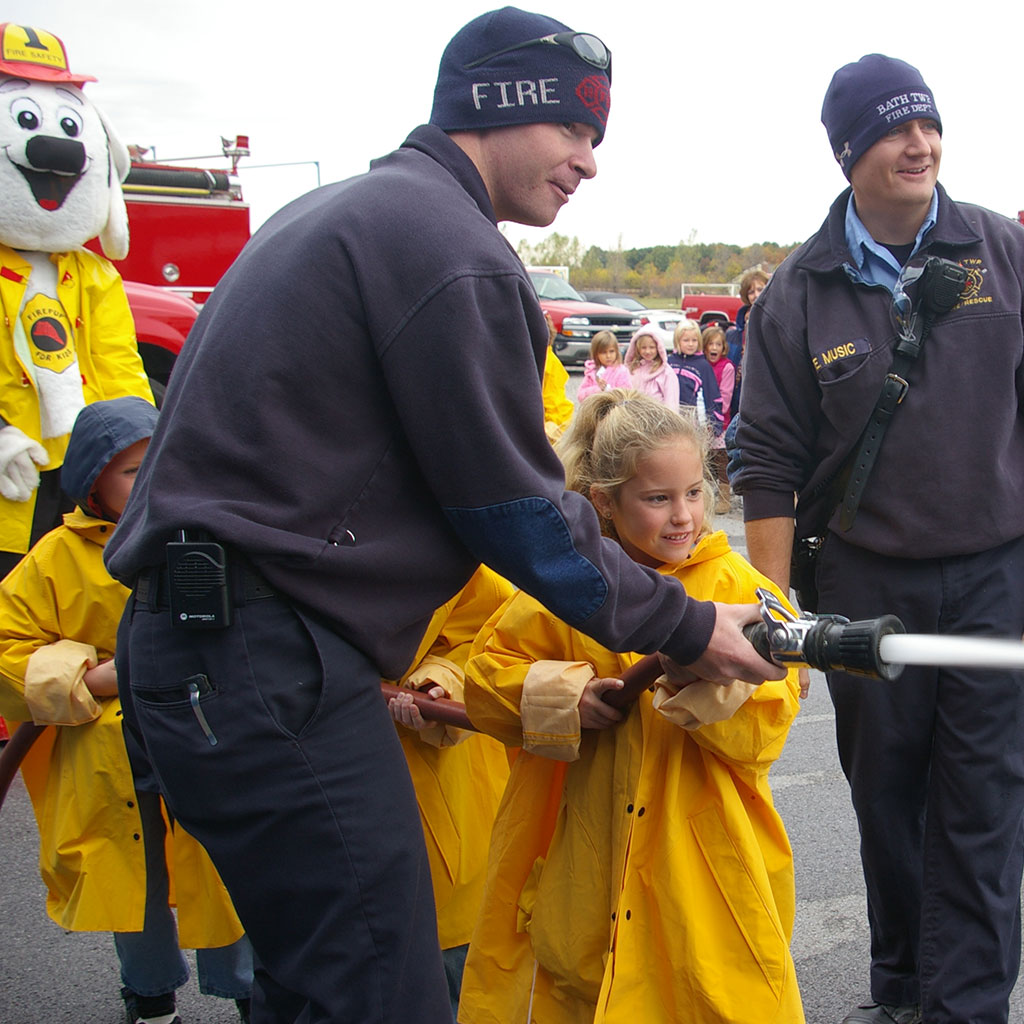Fire Safety Tips
Close Before You Dose!
In case of fire, a closed door can isolate the fire’s flow, reduce room temperature and keep carbon monoxide levels down. “Close Before You Doze” aims to make closing doors at night part of people’s bedtime routine. Your Bath Township firefighters urge you to ensure that all bedroom doors in your home are closed . For More Information check out https://firstresponders.closeyourdoor.org/
General Home Safety
Here are a few easy ways to increase safety in your home:
Check smoke detectors the first or last day of every month by testing them with a well-aimed poke from a broomstick. Change batteries when you turn your clocks forward or backward for daylight savings time.
Keep your stove company. Kitchen fires often occur when wandering cooks forget that they are cooking. When cooking, wear short or close-fitting sleeves to prevent clothing from catching fire. In the event of a cooking fire – PUT A LID ON IT!
Dial 9-1-1. In the event of an emergency call 9-1-1 be prepared to give your name, location, and the nature of your emergency
Prevent kitchen fires. Most home fires begin with cooking equipment. When in the kitchen, remember to:
- Never leave cooking unattended
- Wear clothes with tight fitting sleeves when cooking.
- Always set a kitchen timer to remind you to turn off burners and/or oven.
- Keep stove surfaces free of clutter and built-up grease.
- Always have a lid or some type of non-combustible flat surface to put over a pan fire so that it will be smothered out.
- Never pick up and run with a pan fire that has the potential to spread the fire even further.
Install smoke detectors
- Be sure to have smoke detectors in all sleeping areas and on every level of your home including the basement. Have a smoke detector either in each bedroom or in the hall adjacent to the bedroom.
- Test the batteries in your smoke detectors monthly, and replace your batteries when you turn your clocks forward or back for daylight saving time. If you are hearing impaired, use a tested and approved smoke detector that triggers a strobe light.
Every home should have a fire extinguisher
- At least one fire extinguisher should be installed in plain view above the reach of children in every home.
- They should be positioned near escape routes and away from stoves or heating appliances.
- Keep an all-purpose fire extinguisher in an accessible place and make sure everyone in your home knows how to use it. A multi-purpose fire extinguisher is best. An ABC type of extinguisher can be used on any commonly caused type of fire.
- Extinguishers should be inspected and serviced based upon the manufacturer’s service schedule. Rechargeable models must be serviced after every use. Disposable fire extinguishers can be used only once, then must be replaced.
If you have a fire, ALWAYS CALL 911 FIRST and then proceed as follows to operate an extinguisher, using the P.A.S.S. system:
- PULL the pin out to unlock the operating lever.
- AIM low; point the extinguisher nozzle (or hose) at the base of the fire.
- SQUEEZE the lever below the handle to release the chemical.
- SWEEP from side to side, moving carefully toward the fire.
Keep the extinguisher aimed at the base of the fire and sweep back and forth until the flames appear to be out. Watch the fire area. If the fire re-ignites, repeat the process.
Family escape plan
Have an escape plan and have everyone in the family practice the plan:
- Know two ways out of each room (think doors and windows).
- Have a meeting spot outside the house.
- Have all members of the family practice “Stop, Drop and Roll.”
Give space heaters space
Keep electric or any type of portable space heater at least 3-feet from everything, including you! Just brushing against one could set your clothing on fire. Space heaters need space!
Prevent clothes dryer fires
The National Fire Protection Association reports approximately 14,100 fires per year that are caused by improperly venting a dryer or careless maintenance procedures. Tips for dryer safety:
- Prevent fires with proper dryer duct installation. The dryer duct should vent directly outdoors – never to a room inside the house. Venting a gas dryer inside is especially dangerous because the air discharge can contain a combination of combustible gases.
- Avoid using plastic duct work because it could ignite or melt. Instead, install a hard metal duct from the dryer to the outside of the house.
- Keep the duct free of lint to help reduce the chance of fire spreading outside the dryer and into the vent. Never attempt to dismantle a dryer to clean the line between the dryer drum and the heat element. Contact a professional to do that type of work.
- Use dryer vents constructed of non-flexible metal that contain as few bends as possible.
- Clean the lint trap after every use. Call a professional if your dryer is not working properly.
- Install a smoke detector near your laundry room.
Candles
- Never leave burning candles unattended and always have them in or on a non-combustible surface and away from any combustible surface.
- Don’t place lighted candles near paper, draperies or clothing and never leave papers near a furnace or fireplace.
Be smoker wary
- Use large, deep, non-tipping ashtrays. Empty ashtrays often, wetting the contents before dumping into the trash. Never smoke in bed. Keep lighters and matches away from children.

